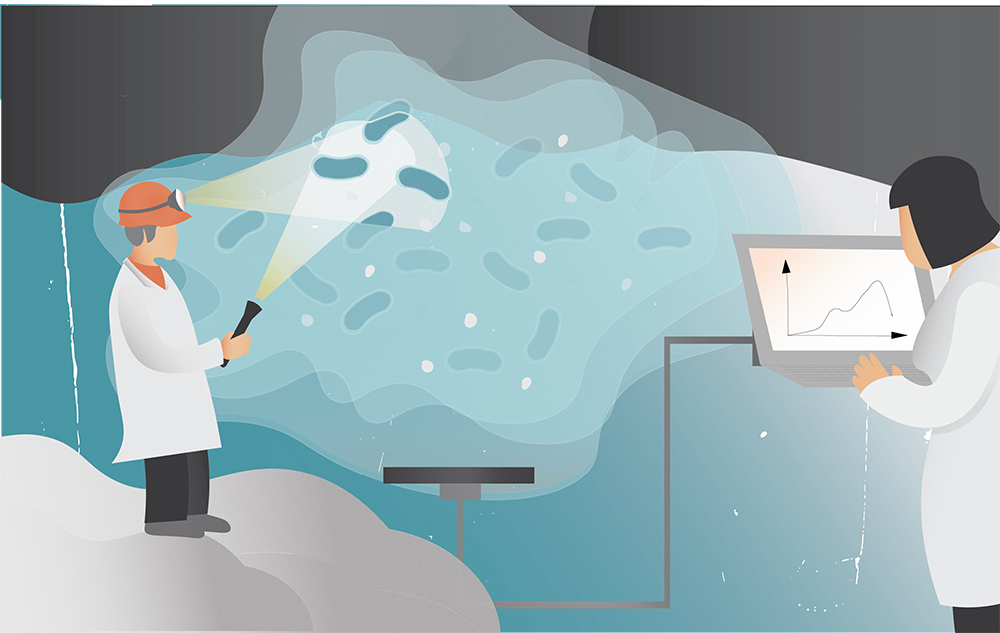Unveiling the Hidden Pathogens: Understanding the Role of Biofilm-forming Bacteria in Dental Caries
Introduction
Dental caries, commonly known as tooth decay or cavities, is a pervasive oral health problem affecting individuals of all ages. It poses significant challenges to public health due to its prevalence and impact on overall well-being. While dental caries has long been associated with poor oral hygiene and sugar consumption, recent research has uncovered a deeper layer of complexity within this seemingly straightforward disease. One crucial factor that has emerged as a significant contributor to dental caries is the presence of biofilm-forming bacteria. In an article published recently in Nature Communications using the calScreener, researchers delve into the importance of understanding the role of biofilm-forming pathogens in dental caries, as highlighted by recent research.
The Importance of Biofilm-forming Pathogens in Infectious Diseases
Biofilms are structured communities of microorganisms embedded within a self-produced matrix of extracellular polymeric substances. These biofilm-forming pathogens play a significant role in various infectious diseases, extending beyond dental caries. They contribute to the contamination of biomedical devices and implants, leading to chronic infections that are challenging to treat. Understanding the emergent properties and interspecies interactions within biofilms is crucial for developing effective preventive and therapeutic strategies against these infectious diseases.
The Underappreciated Oral Plaque Biofilm Communities
Within the oral cavity, biofilms known as oral plaques play a central role in modulating oral health and disease. These complex microbial communities adhere to tooth surfaces and other oral structures, including dental restorations and prostheses. While previous research has shed light on the association between specific microbial species and oral diseases, our understanding of the taxonomic and functional aspects of microbial interactions within oral biofilms remains limited. Comprehensive investigations are necessary to unravel the intricate relationships and mechanisms at play within these biofilm communities.
Dental Caries: A Biofilm-mediated Disease
Dental caries is a biofilm-mediated disease that involves a dynamic interplay between the host, dietary factors, and microbial biofilms. The bacterium Streptococcus mutans has long been recognized as a key pathogen associated with dental caries. However, recent advancements in research techniques, such as DNA sequencing-based metagenomics, have revealed the involvement of other bacterial taxa in this disease. By expanding our understanding beyond S. mutans, we gain valuable insights into the complex microbial ecosystem that contributes to the development and progression of dental caries.
The Multi-Modality Discovery-Validation Pipeline
In a groundbreaking study, researchers employed a multi-modality discovery-validation pipeline to uncover the microbial basis of dental caries. This innovative approach integrated clinical data, informatics discovery, and experimental models to analyze large community-based samples. Rigorous selection criteria ensured the inclusion of diverse oral microbiomes, providing a comprehensive view of the microbial communities associated with dental caries.
Unraveling the Role of Selenomonas sputigena and Other Pathogens
The study revealed unexpected findings regarding the involvement of specific pathogens in dental caries, notably Selenomonas sputigena, Prevotella salivae, and Leptotrichia wadei. These bacteria were found to be present in supragingival biofilms, forming unique interactions and displaying functional repertoires relevant to the pathogenesis of dental caries. Of particular interest was the discovery of S. sputigena's cooperation with S. mutans, resulting in the formation of a virulent biofilm structure that exacerbates the severity of dental caries in rodent models.
Advancing our Understanding and Implications
While this study provides significant insights into the role of biofilm-forming pathogens in dental caries, there are still several avenues for further exploration. Understanding inter-kingdom interactions and conducting longitudinal human studies would offer a more comprehensive understanding of the disease's progression. Additionally, incorporating multi-omics approaches and experimental validation would allow for a deeper investigation of pathogenic mechanisms and identification of potential therapeutic targets. The findings from this study have broader implications beyond dental caries, as they contribute to our understanding of biofilm assembly and may find application in addressing other polymicrobial infections.
Conclusion
The emergence of biofilm-forming bacteria as key players in dental caries highlights the need to expand our understanding of this complex disease. By unraveling the intricate interactions within oral biofilms, we gain valuable insights into the pathogenesis of dental caries and open doors to novel preventive and therapeutic strategies. Further research in this field is crucial to improving oral health outcomes and enhancing overall public health. By recognizing the importance of biofilm-forming pathogens in dental caries, we can take significant steps towards combating this pervasive oral health problem and promoting oral well-being for all.
Reference
Cho, H., Ren, Z., Divaris, K. et al. Selenomonas sputigena acts as a pathobiont mediating spatial structure and biofilm virulence in early childhood caries. Nat Commun 14, 2919 (2023). https://doi.org/10.1038/s41467-023-38346-3
